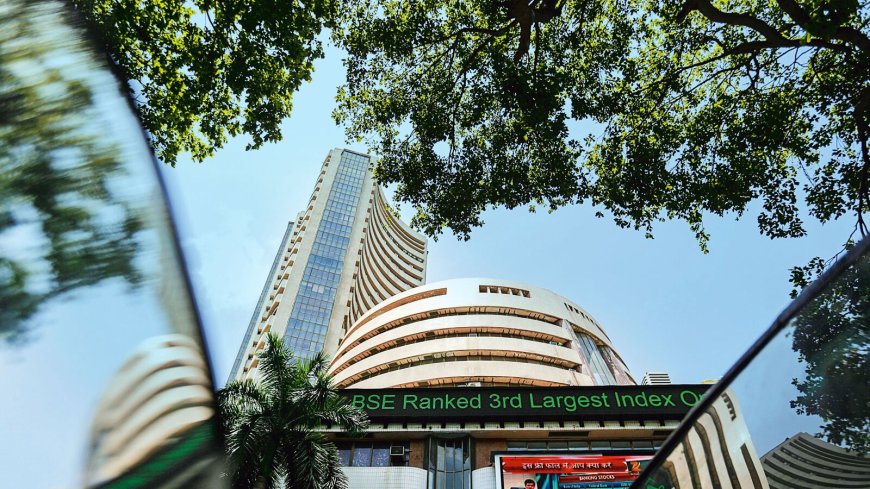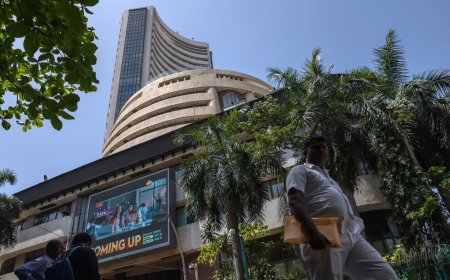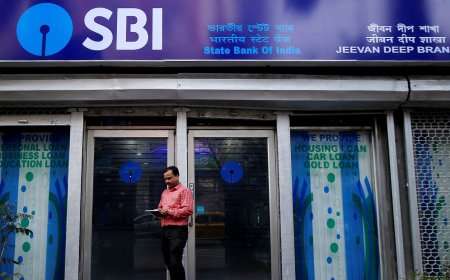India’s share in global market cap up from recent low—but risks remain
India's share in global equity market cap has rebounded from recent lows, supported by robust domestic flows and earnings. But risks like high valuations and global headwinds persist.

India’s share in the global equity market capitalization has witnessed a recovery from its recent lows, signaling renewed investor confidence and economic momentum. After slipping to around 3.6% earlier in 2024 due to global volatility and domestic valuation concerns, India’s share has climbed back to approximately 4.1% in mid-2025. However, while the resurgence is encouraging, several structural and external risks continue to hover over the horizon.
Recovery Driven by Strong Domestic Flows and Resilient Earnings
According to data from Bloomberg and stock exchanges, India’s market capitalization has surpassed $4.7 trillion as of July 2025, rebounding from below $4 trillion in mid-2024. This uptick has been supported by sustained retail and institutional inflows, improved corporate earnings, and a bullish sentiment around India’s long-term growth potential.
“India’s equity market has benefited immensely from the domestic consumption story, robust services exports, and policy stability in a pre-election year,” said Neelam Shah, Head of Research at CapitalEdge Advisors. “Investors are rotating capital back into growth markets like India as macro headwinds in the West persist.”
The Nifty 50 and Sensex have both posted double-digit gains year-to-date, with sectors such as financials, capital goods, auto, and IT leading the rally. In June alone, foreign portfolio investors (FPIs) injected over ₹35,000 crore into Indian equities, reversing the outflows seen in late 2024.
Global Context: India Outpaces Peers Amid China Weakness
India's rising global market cap share comes at a time when several emerging markets, including China, are facing growth constraints and geopolitical uncertainties. China, which once commanded over 10% of the global market cap, has seen a decline in investor interest due to slowing economic growth and regulatory crackdowns in tech and real estate.
“Global investors are increasingly diversifying away from China and reallocating funds to relatively stable and reform-oriented economies,” said Rajat Varma, Asia Strategist at Orion Global Investments. “India fits that narrative with its demographic dividend, digital infrastructure boom, and political continuity.”
In contrast, markets in Latin America and Eastern Europe have remained volatile, weighed down by currency instability and commodity dependence. This gives India an edge as a consistent performer in the EM (emerging market) basket.
Risks That Could Cap the Upside
Despite the bullish backdrop, analysts caution that several risks could temper India’s growing influence in global equity markets.
1. Valuation Concerns
India remains one of the most expensive large markets globally, trading at a trailing PE (price-to-earnings) ratio of over 24x—well above its 10-year average and significantly higher than peers.
“High valuations leave little room for error. Any earnings miss or geopolitical shock could lead to a sharp correction,” warned Aditya Menon, Portfolio Manager at Axis Securities.
2. Rural Stress and Monsoon Dependence
While urban demand remains resilient, rural India continues to show signs of stress due to erratic monsoons and inflationary pressures. The uneven rainfall this year has impacted sowing activity, which could have downstream effects on consumption and rural employment.
3. Global Macroeconomic Uncertainty
The possibility of prolonged higher interest rates in the US, a slowing Eurozone, and continued geopolitical tensions—especially in the Middle East and South China Sea—pose risks to capital flows into emerging markets.
Government and Policy Support in Focus
The Indian government’s thrust on capital expenditure, infrastructure, and manufacturing continues to be a pillar of support for long-term market optimism. The Production-Linked Incentive (PLI) schemes have gained traction across sectors like electronics, textiles, and pharmaceuticals.
Moreover, the Reserve Bank of India (RBI) has managed to strike a delicate balance between inflation control and supporting growth. India’s inflation currently hovers around 4.5%, within the RBI’s comfort zone, enabling a neutral-to-accommodative policy stance.
“Policy continuity, particularly in the run-up to the 2026 general elections, is critical. Investors are watching for fiscal prudence alongside populist measures,” said Prerna Tiwari, Economist at SparkMacro Research.
Investor Outlook: Cautious Optimism Prevails
Looking ahead, market participants are cautiously optimistic. While India’s relative positioning in global equity markets has strengthened, much will depend on corporate earnings delivery, macroeconomic stability, and global risk appetite.
Mid- and small-cap stocks have outperformed recently, but analysts suggest a measured approach.
“Investors should focus on quality stocks with strong balance sheets and predictable earnings. This is not the time for excessive risk-taking,” said Ankit Bansal, CIO at Truline Capital.
The upcoming earnings season, monsoon performance, and global cues will likely dictate short-term market direction. Long-term, however, India’s structural story remains compelling, making it a core allocation for global and domestic investors alike.
What's Your Reaction?
 Like
0
Like
0
 Dislike
0
Dislike
0
 Love
0
Love
0
 Funny
0
Funny
0
 Angry
0
Angry
0
 Sad
0
Sad
0
 Wow
0
Wow
0













































































